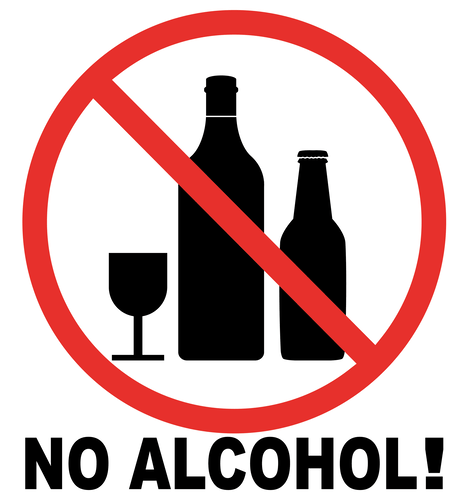In the absence of adequate immunity, however, the bacteria ingested by macrophages continue to multiply within these immune cells, and characteristic lesions called tubercles eventually form in the lungs. Among other symptoms, people with active TB develop a bloody cough, fatigue, and difficulty breathing. TB can affect any organ system or develop into systemic infection (i.e., miliary TB) when infected cells spread from the lungs and disseminate through the bloodstream.
How much alcohol you have to drink before it weakens your immune system
No effective vaccination against TB currently exists, but 6 to 9 months of treatment with multiple antituberculous drugs will cure most TB patients who complete the course of therapy. Clinicians have long observed an association between excessive alcohol consumption and adverse immune-related health effects such as susceptibility to pneumonia. In addition to these changes in cytokine function, investigators also have shown a contribution of barrier dysfunction to the postinjury increase in infections in intoxicated people (Choudhry et al. 2004). Thus, alcohol intoxication can suppress chemokine production and impair the expression of proteins that allow neutrophils to adhere to other cells at the site of infection, which also contributes to increased susceptibility to infection. For example, in a model of lung infection, acute alcohol intoxication suppressed the production of certain chemokines (i.e., CINC and MIP-2) during infection and inflammation, thereby markedly impairing the recruitment of additional neutrophils to the site of infection (Boé et al. 2003). This defective neutrophil recruitment could be partially restored by localized chemokine administration (Quinton et al. 2005).
A glass of wine with dinner ‘could improve health’
Taken together, these studies suggest that chronic alcohol-induced T cell lymphopenia increases T cell activation and homeostatic proliferation resulting in increased proportion of memory T cells relative to naïve T cells. These clinical observations were confirmed with cultured cells as well as in rodent studies. Treatment of a mouse cell line (i.e., A78-G/A7 hybridoma cells) with different concentrations of ethanol (25, 50, 100, and 200mM) for 48 hours resulted in a linear increase in IgM levels (Muhlbauer et al. 2001).
Modulation of Innate Immunity by Alcohol
The antibodies can recognize and interact with antigens, and each B-cell produces antibodies that recognize only one specific antigen. These antibodies then will bind to any matching antigen molecules they encounter in the blood or on other cells, thereby marking them for destruction. Some B-cells, however, become memory cells that will remain dormant in the body for years and can be activated rapidly if a second infection with the same pathogen occurs. The activities of T-cells and B-cells are intricately intertwined through the actions of various cytokines to orchestrate an effective immune response to any pathogen the organism may encounter. Their main role is to capture, ingest, and process antigens in order to present them on their surface to cells of the adaptive immune response (i.e., to the T-lymphocytes).
These changes include direct addition of a methyl group to DNA (i.e., DNA methylation) or chemical modifications of the proteins (i.e., histones) around which DNA is wrapped, such as acetylation, methylation, and phosphorylation (Holliday 2006; Hsieh and Gage 2005; Murrell et al. 2005). Both regulatory mechanisms related to miRNA and epigenetic mechanisms are interrelated (see figure 3). Thus, several miRNAs themselves are regulated epigenetically but also are capable of targeting genes that control epigenetic pathways (e.g., polycomb group-related genes and histone deacetylase).
Remember how alcohol disrupts the protective barrier in the gastrointestinal tract, compromising its ability to regulate the passage of substance? This disruption in barrier function can result in gut-related issues, including inflammation. The intestinal microbiota (IMB) is the alcohol-induced blackouts blackout drunk alcohol blackouts set of microorganisms that inhabit our intestines. These microorganisms, among others, include bacteria, fungi, yeasts and viruses [42]. However, in most cases, when referring to IMB, one usually refers to the populations of bacteria that have colonized our large intestine.
In addition to reducing T-cell numbers, chronic alcohol exposure disrupts the balance between different T-cell types (i.e., T-cell homeostasis), leading to a shift toward a memory phenotype. Specifically, people who had consumed 30.9 ± 18.7 alcoholic drinks/day for approximately 25.6 ± 11.5 years exhibited a decreased frequency of naïve (i.e., tremor national institute of neurological disorders and stroke CD45RA+) CD4 and CD8 T cells, as well as an increased frequency of memory T cells (i.e., CD45RO+) (Cook et al. 1994). Another study conducted in humans with self-reported average alcohol consumption of approximately 400 g/day also found an increase in the percentage of both CD45RO+ memory CD4 cells and CD8 cells (Cook et al. 1995).
You can benefit from our inpatient program, which helps you overcome your withdrawal symptoms and teaches you healthy coping strategies to deal with alcohol cravings. After completing the inpatient portion, you can continue on the road to recovery with our intensive outpatient program. Quitting alcohol is incredibly challenging, but absolutely critical if you want to preserve your health. It may seem impossible to break this cycle of addiction and protect your well-being at the same time. Ardu is here to guide you through alcohol detox, help you manage cravings, and build skills for long-term recovery.
- However, in most cases, when referring to IMB, one usually refers to the populations of bacteria that have colonized our large intestine.
- Nevertheless, studies have shown that the normal gut microbiota comprises mainly Bacteroidetes and Firmicutes as the dominant phyla, followed by Actinobacteria and Verrucomicrobia.
- Chronic alcohol consumption triggers an inflammatory response, contributing to various health issues.
- Some researchers have proposed that alcohol’s modulatory effects on the immune system may increase the risk of initial HIV infection as well as accelerate the infection’s progression.
Similarly, ONP cells isolated from newborn mice and cultured in vitro in the presence of 100 mM ethanol for 12 days failed to respond to IL-7 and commit to the B lineage, suggesting intrinsic defects (Wang et al. 2011). Additional investigations demonstrated that alcohol affects ONP cell differentiation into B lineage at a late stage by down-regulating the expression of several transcription factors (e.g., EBF and PAX5) and cytokine receptors, such as the IL-7 receptor (IL-7Ra) (Wang et al. 2009). Alcohol consumption increases intestinal permeability through the suppression of intestinal tight junction protein expression. This alteration allows the translocation of bacterial products to the systemic circulation. The gut-derived bacterial components together with LPS activate the immune cells localized in the systemic circulation or in target organs such as liver and brain.
3The HIV (or SIV) set point is the stable viral load that is established in an HIV-infected person after the initial phase of the infection, when the person’s immune systems tries to fight the virus. The higher the viral load of the set point, the faster infection will progress to full-blown AIDS. Alcoholics Anonymous is available almost everywhere and provides a place to openly and nonjudgmentally discuss alcohol issues with others who have alcohol use disorder. Long-term alcohol use can change your brain’s wiring in much more significant ways. Cirrhosis, on the other hand, is irreversible and can lead to liver failure and liver cancer, even if you abstain from alcohol.
Both innate and adaptive immunity rely on a multitude of different cells and molecules. Thus, both types of immunity are mediated partly by the actions of specific immune cells (i.e., include a cell-mediated response) and partly by the actions of molecules secreted by various immune cells (i.e., include a humoral response). In contrast to the inhibitory effects of acute alcohol treatment (up to 24 hours), prolonged exposure of human (men and women) peripheral blood monocytes lsd overdose lsd overdose treatment signs and symptoms learn more to 25mM ethanol for 7 days increased LPS-induced TNF-α production without affecting IL-10 production (Pang, Bala et al. 2011). Prolonged exposure of Mono Mac 6 cell line to 25mM, 50mM and 75mM ethanol for 7 days also reverses the initial inhibition of LPS or PMA-induced TNF-α production in a dose-dependent manner (Zhang, Bagby et al. 2001). Alcohol-related alterations of immune surveillance also have been implicated in the development of cancer (Poschl and Seitz 2004).
The immune response, therefore, would be one of the main channels through which the gut-brain axis establishes communication [108]. Interestingly, central neuroinflammation is maintained after cessation of alcohol consumption, compared to peripheral activation [114] and during periods of abstinence [108]. Finally, in relation to the effect of alcohol on neuroinflammation, a study by Lowe et al. showed an attenuation of alcohol-induced neuroinflammation after reducing the gut bacterial load, as a result of antibiotic treatment [115].






